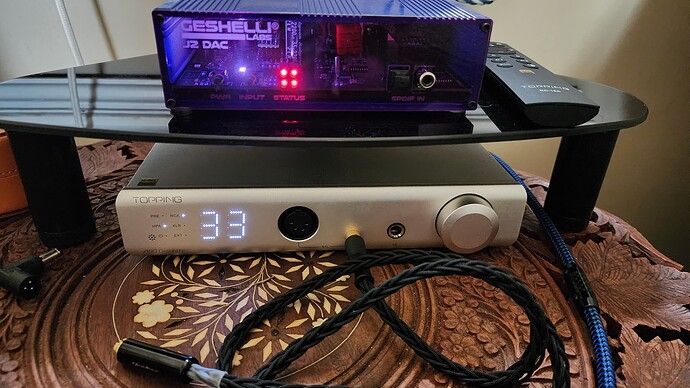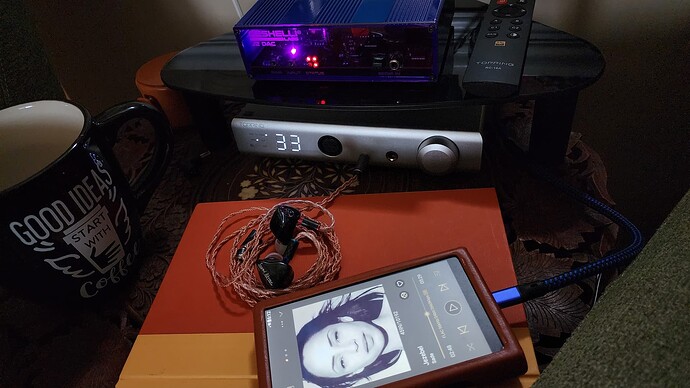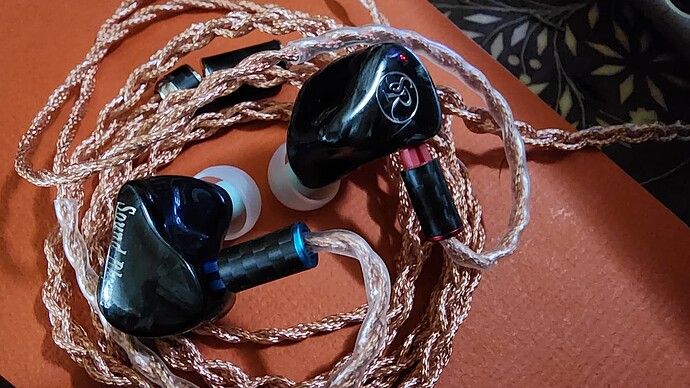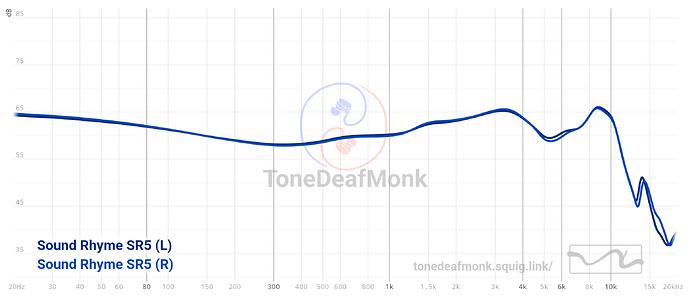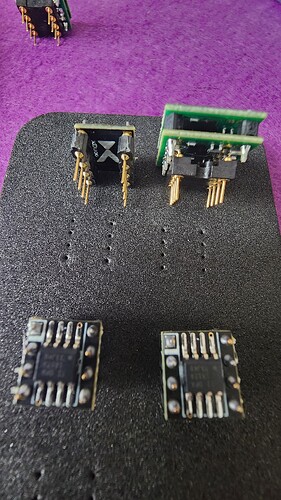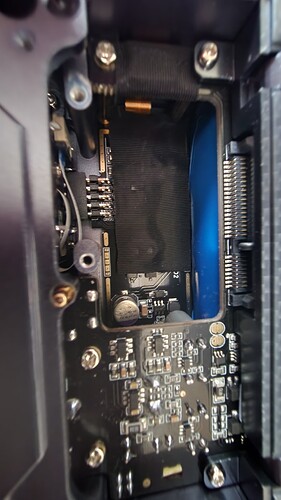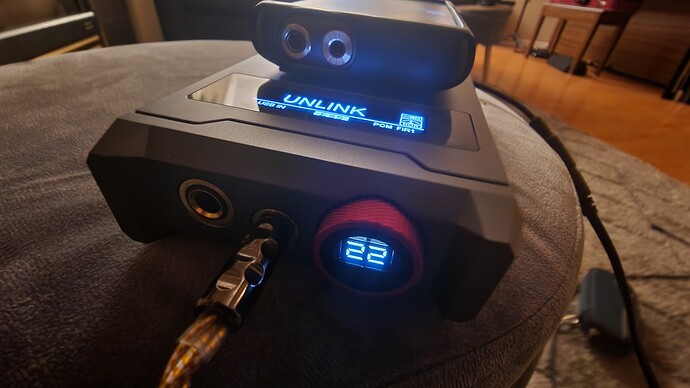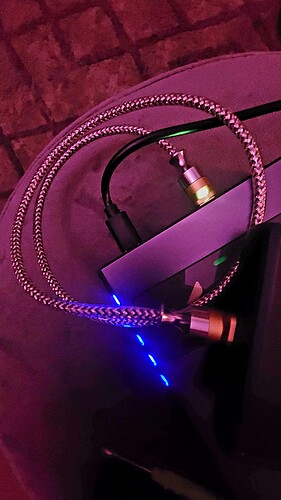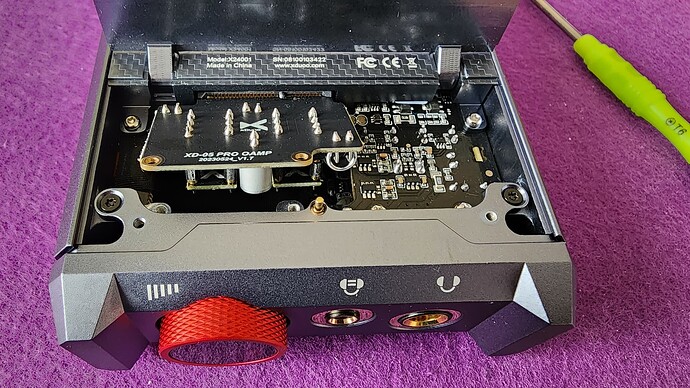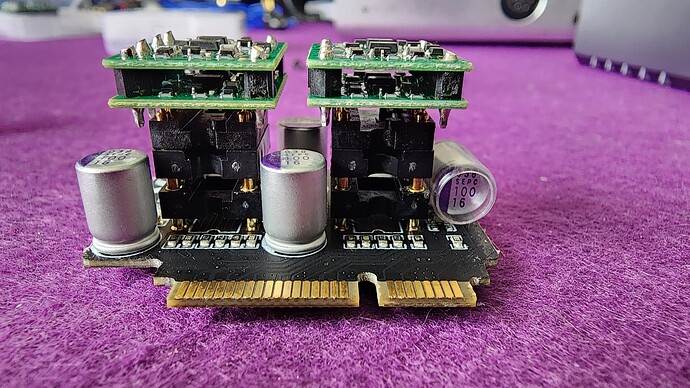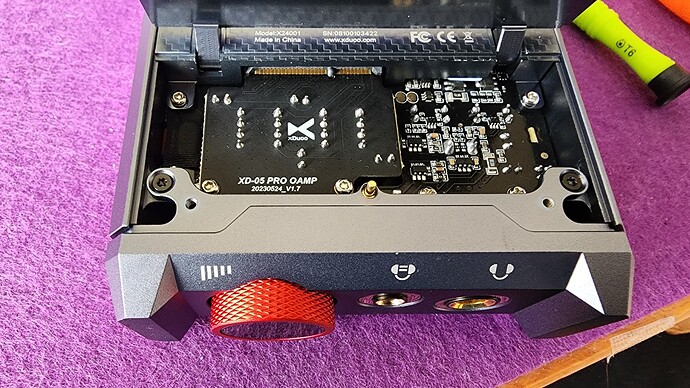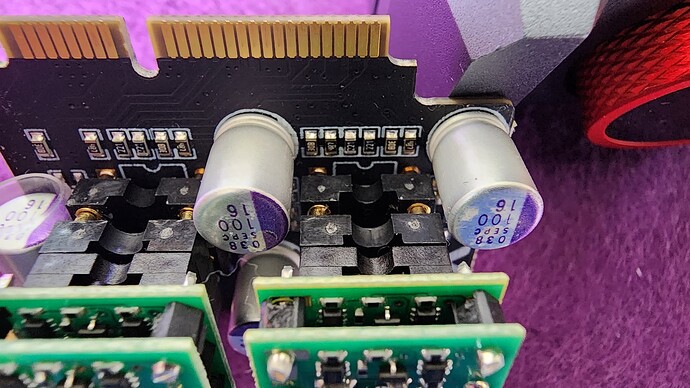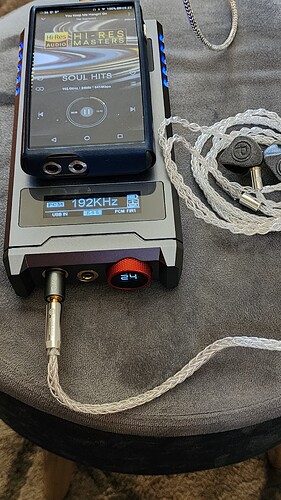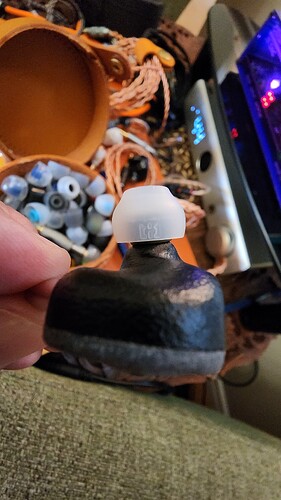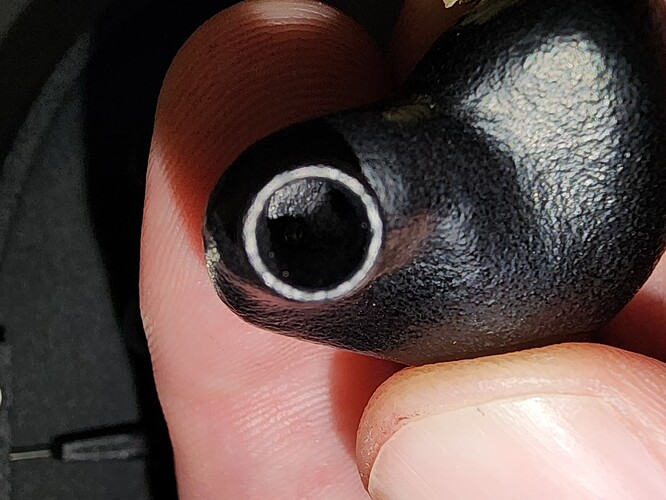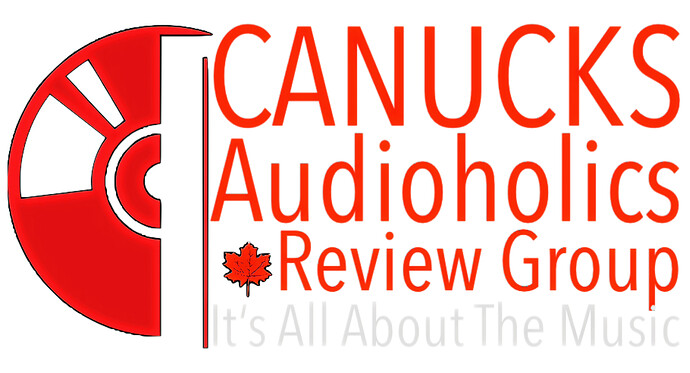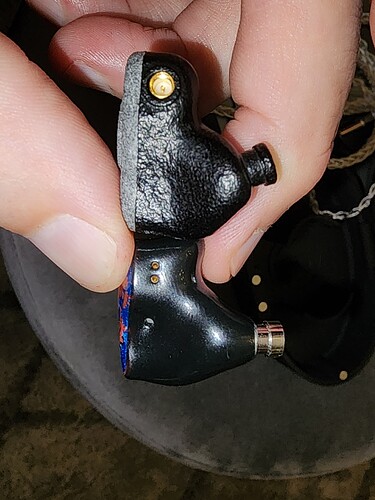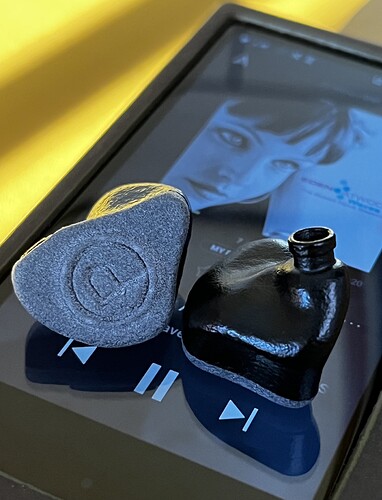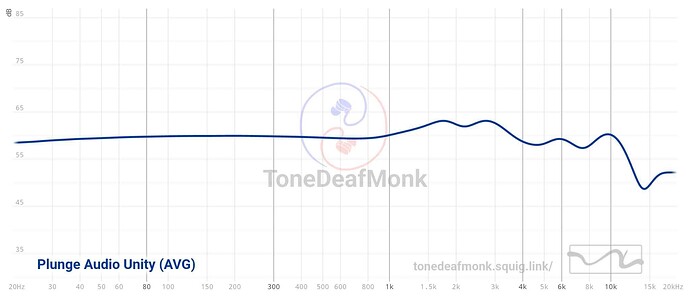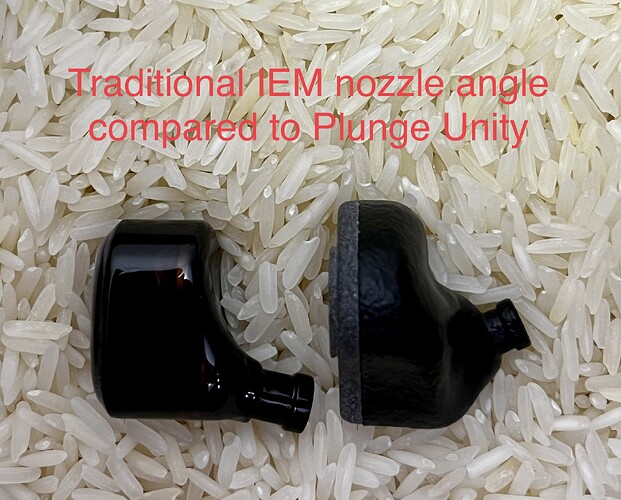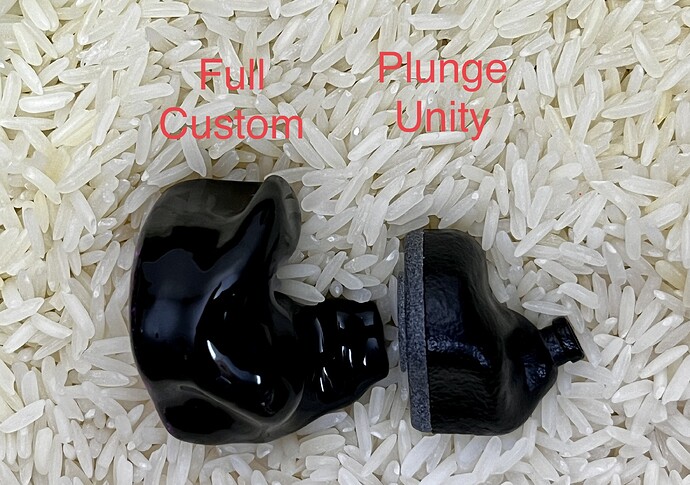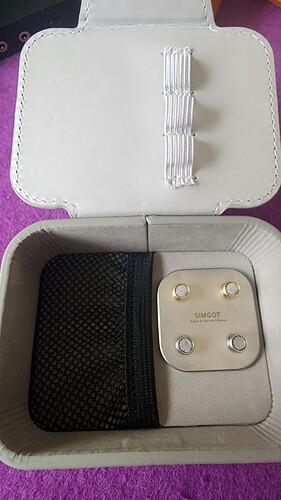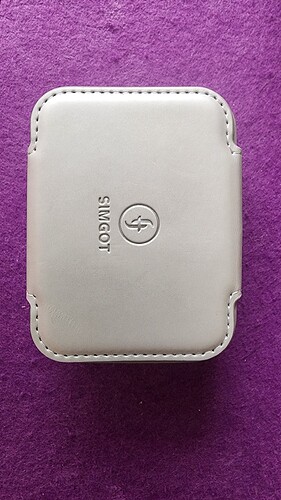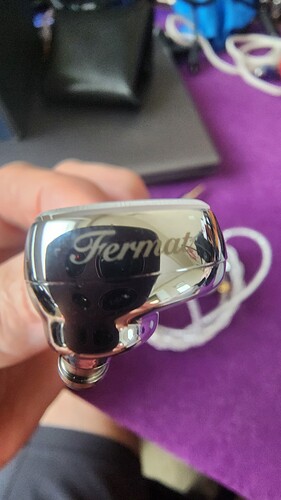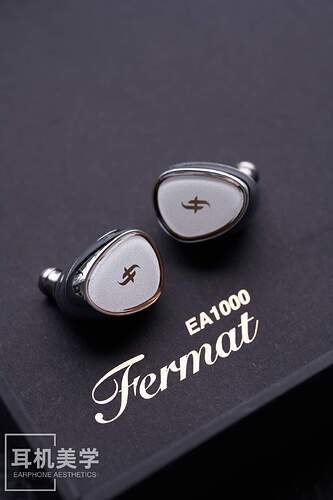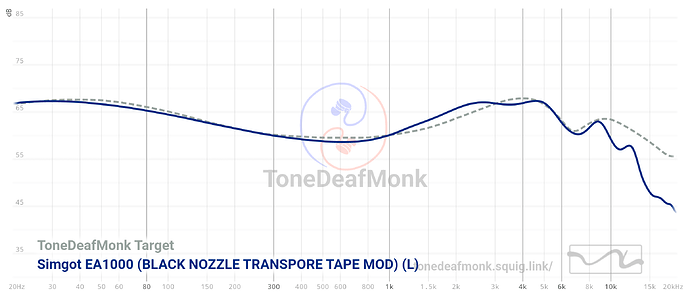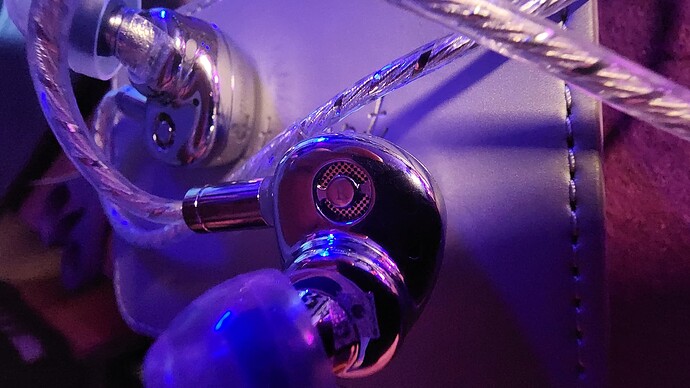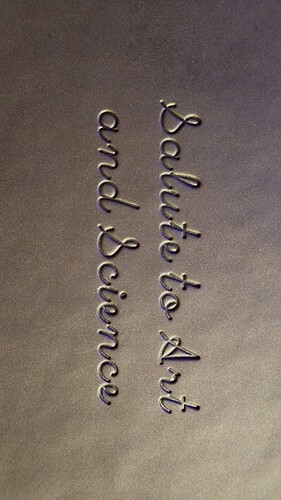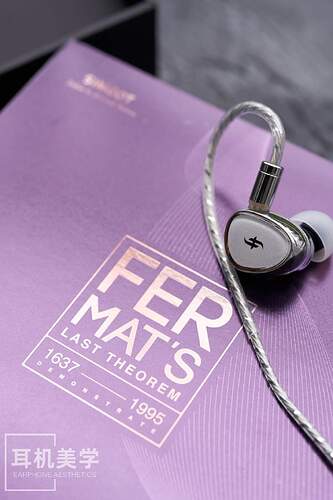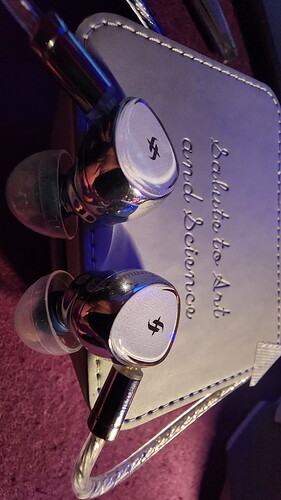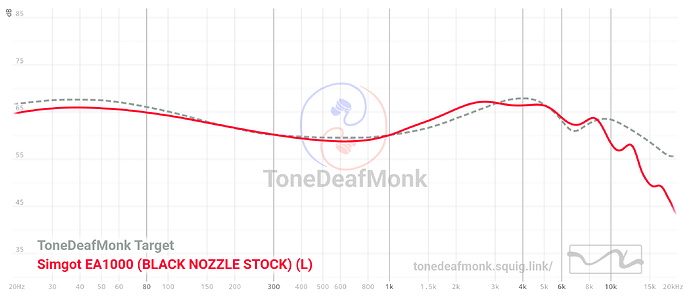Plunge Audio UNITY
4 BA Semi Custom Universal.
“Custom fit isolation, and comfort in a Universal”
Impedance: 36ohms @ 1kHz
Sensitivity: 94dB SPL @ 1kHz 250mVRmS
Response: 10Hz – 20kHz
Attenuation (Noise Isolation): -28dB
Preamble:
“Canuck Audioholics review group received a review sample of the Unity to share among the three of us. The review sample will be returned to Plunge Audio at the end of the tour. We received no monetary benefit”
I had the pleasure of meeting with and enjoying a very good conversation with Simon Fisk, owner and creative inspiration behind Plunge Audio.
When all was said and done I had a very good understanding of the technical innovations that Simon has developed, and, which set Plunge Audio apart in a vibrant and crowded industry.
This review chronicles my experience, Tone Deaf Monk and King Nubian (Silicone Soundz) will be posting soon as well.
The technical innovation is one key component to what makes the Unity unique and special.
Simon shared some of Unity’s design elements with me that are not disclosed on the Plunge website, and I don’t want to inadvertently disclose information he may not want made public.
So I’m going to paste this summary paragraph from the website, and, say the shell design is without argument a game changer, and a blessing for anyone who struggles with fit, seal, and anchor with IEMs.
“Plunge Unity IEMs are engineered to operate with the same sound quality as customs, but at 1/3 the cost and with a fit that will last forever. Unity IEMs feature a Patent Pending (No. 221187) shell design with a shape, canal entrance, and nozzle angle specific to your ear’s anatomy, for a truly organic fit that matches a Custom-IEM (-28dB Attenuation) with all the benefits of a Universal-fit product”.
You can find additional information and testimonials by searching Plunge Audio and visiting the webpage.
Pros:
-Hand built, tuned, tested, quality inspected, and packaged.
-Printed semi custom shells are dust bed 3D printed and made with nylon. Stronger than resin, and very lightweight.
-As close to custom fit as you’re going to get, with -28dB isolation.
(As someone who has tried customs due to fit frustrations with universal, I testify, this is legit)
-Good sub bass extension.
-Mid bass has good presence and impact.
-Mids Detail, Clarity, and Separation.
-Highs detail, clarity, air
-Spot on tonality and timbre.
-Follows sound signature of source device.
-Follows recorded source.
-No tuning switches 
 .
.
(Old school source, ear tip, and cable, tuning options)
-Open BA design, no tubes, no dampeners. Just professional, shell design and tuning.
-Quality 3.5mm stock cable has great synergy with IEM.
-Price (subjective)
Cons:
-Can be source fussy
-No option to upgrade to balanced cable.
-Price (subjective)
Design and Technology:
In addition to sounding incredibly good, the design and innovative technical aspects of the Plunge Unity are truly what sets them apart from the status quo.
Unity utilizes 4 Sonion BA drivers in an open BA configuration, no tubes.
The drivers are mounted higher up in the shell and fire into an engineered sound chamber.
Sound chambers aren’t new, but design is critical to sound reproduction and in my humble opinion, Simon has nailed it.
From the sound chamber, sound travels straight out the open nozzle, no nozzle mounted BA, no dampeners.
The nozzle design is paramount in the success of Unity fulfilling Plunge’s claim that a universal IEM can compete with a full custom for fit, comfort, anchor, seal, and ambient isolation.
Simon didn’t share all his design secrets with me, but a key element in the (patent pending) design is that the nozzle angles upward, and follows the natural pathway of the ear canal.
(See photos. Note: not all traditional universal IEM’s have the same nozzle angle, some are closer to straight out, but, I personally have yet to see a pair that angle upward  )
)
Those who are familiar with my reviews may recall I often mention having fit challenges with many universal IEMs.
For that reason I recently started gravitating toward full customs.
Fit wise, Unity is a game changer for me personally.
Fit, anchor, comfort, and isolation are very close to on par with my customs.
I put them in, and don’t fiddle with them for 2-3 hour sessions.
On most universals I have to reset the anchor/seal at minimum a few times, and often it’s consistently during a session. it is also not unusual for some ill fitting sets to irritate my ears after an hour or so.
Sound:
(Simon told me the Unity is tuned to give optimum efficiency at 82dB)
So how does Unity sound?
Looking at the graph supplied by Tone Deaf Monk Unity is tuned quite flat, a bit of rise in the mids, then rolling off going into the highs, with a recovery at 6k and again around 10k.
I would say the graph is generally an accurate representation of the sound signature and tuning, but, don’t be fooled. The Unity responds to both the device, and, recorded source, if the track is bass heavy, the bass is there. If the track is recorded bright, the upper end will step up.
Unity responds to the power source. Of my sources available I prefer listening to a highly resolving source.
For that reason I chose the AK Kann Alpha set to mid gain for my sound evaluation.
I will touch briefly on other sources used after the summary.
Equipment:
Plunge Unity, 60-70 hrs aged.
Astell & Kern Kann Alpha, mid gain.
LQI SPC 4.4mm/mmcx cable.
Moondrop Spring wide bore tips.
Sub bass is not omnipresent, but it can, and does, extend deep when called on. It is textured and typically decays fairly quickly without permeating the entire head stage.
Mid and upper bass have good presence. Good thump on kick and tom drums. Very nice thump and resonance on stringed bass instruments. All clean, tight and detailed.
Mids and Vocals are slightly forward in the mix. Exceptional clarity detail and separation.
Violins are clear and natural, upper registers of piano are sharp and clear, electric guitars have bite.
Vocals are detailed accurate and natural on both male and female.
Highs are very detailed with good micro detail retrieval.
They can be somewhat relaxed at lower volumes, however, they still shine and I seldom find myself wanting for more.
Cymbals are sharp and crisp with good sizzle, electric guitars grab some nice air.
There is no hint of harshness or sibilance.
Head Stage is immersive on all three axis. Front to rear, top to bottom, left to right, the head space is completely filled and extends slightly outside the head.
One of the attributes of the Unity that I have very much come to appreciate is the uncompromising clarity, detail, and separation in all frequencies.
With respect to staging this results in outstanding layering and imaging.
With Unity, my perception of where I am in relation to the band within the head space is something I have never experienced before with any other IEM.
On other IEMs I perceive myself to be in the audience, sometimes an intimate head stage like a small club, other times a more expansive venue like a stadium. But always in the audience.
With Unity, the perception is I’m on stage with the band.
There is an American Jazz artist I enjoy, Eden Atwood. Listening to the Song “He’s a Carioca” from the album Waves recorded DSD, the stage perception is incredible.
I’m a few feet behind and to the right of Eden’s vocals.
Piano is further to the right, outside and just forward of my ear.
Guitars are left stage, directly outside my left ear.
Drums directly behind me, cymbals elevated above left shoulder.
Bass is emanating from my position on stage.
The perception being; I’m playing bass in the band.
Summary:
I think it is obvious that I find favour with the Unity.
The AK Kann Alpha source pairs incredibly well with the Unity.
But, Unity is a chameleon when it comes to source devices.
You get out what you put in.
Read some of the source comparisons that follow this summary, not all pair well, at least not for my preferred listening preference.
Unity prices at $899 Canadian, which at the time of this writing is $650-670 usd at current exchange rates.
So who is the Unity for?
Plunge started making custom IEM’s for musicians and industry professionals in 2008. They have more than 10K units in the market.
Simon wanted to get away from the expense and long lead times of manufacturing customs, so he has developed the semi custom shell design, in part to continue to service musicians and industry professionals.
If you check the testimonials on Plunge’s website, you will find most, if not all, are from musicians.
So tick that box.
As for Audiophiles;
Individuals such as myself who were frustrated enough with the fit challenges of many universal IEMs that we turned to, and invested in full custom IEMs.
The secure fit and comfort of Unity alone are worth the price of admission for me.
The exceptional tuning and sound quality further substantiate the value.
Audiophiles who appreciate an IEM that accurately reflects the the source, and enjoy a detailed and accurate reproduction of well recorded tracks, delivered with an incredible head stage.
Anyone who is comfortable buying ear gear at or above this price point and see enough reasons above to be intrigued.
Source Comparisons:
All comparisons against Kann Alpha as reference point.
Shanling M9 Ltd. Low Gain Balanced 4.4 out.
M9 has a warm and fairly balanced tune.
Unity warms up considerably, bass carry’s further into the head stage, and has a bit of “boominess”.
Mids and vocals are warmer at the expense of some detail and clarity.
Highs are still bright with good air.
Head stage still has excellent width and height, but front to rear depth is tighter.
Still sounds very good on this source.
Bass is thicker and heavier.
Shanling M6U Low Gain, Balanced 4.4 out.
The M6U is also a warmer source than the Kann Alpha, but more mids forward.
Bass is warmer and thicker, but the mids forward tuning keeps mids and vocals clear and detailed.
Mids may be a bit too forward for some.
Highs are clear and airy.
Head stage is wide, tall and the forward mids and vocals push it just slightly more forward for depth.
Hiby RS6 R2R Low Gain, 4.4 balanced out.
The R2R DAC pairs up quite nicely.
The more analog sound signature provides nice warm bass without being boomy.
RS6 is also a mids forward tune so mids and vocals are front and center with excellent clarity detail and separation.
Highs are clear and airy.
The head stage is the full meal deal. Width, height, and depth with clarity, separation, and accurate imaging.
iPhone 13, lightning to 3.5, Apple Lossless, stock cable.
Sounds better than many IEM straight off iPhone.
Bass lacks energy compared to off DAP, mids and vocals are forward, highs are decent but veiled.
Good volume at 50-60%.
“Only if you’re desperate for an audio fix”
iPhone 13, IFi hip DAC, 4.4 balanced.
Apple Lossless.
Hip DAC really brings out the bass, and that’s with XBass off.
Mids and Vocals are warmed a lot at the expense of clarity and detail.
Highs are veiled.
Not for me, but if you like strong bass may be ok.
**Switched to Qobuz:
Much better.
Still strong bass presence, but tighter.
If you have any doubt a BA can’t do good bass, hit Xbass, it’s not necessary, but Unity eats it up and spits it out in spades.
Mids are less forward and much cleaner and detailed.
Highs clear and airy.
Still overall warm and bassy, but a pretty reasonable option for iPhone.
iPhone 13 Colorfly CDA M1, 4.4 out.
Qobuz.
Bass is warm but not boomy.
Mids and Vocals are warm, but remain clear and detailed.
Highs clear and airy.
Surprised me this one. Decent pairing, my favourite so far with iPhone.
iPhone 13 AAC BT connect to FiiO BTR3
4.4 out, Qobuz.
Sounds pretty much the same as Colorfly.
Another decent warm sounding pairing.
So my 2 favourites would be Astell & Kern Kann Alpha for clean crisp and highly detailed.
And Hiby RS6 for warm and more relaxed.


